New York, New York . . . If you can make it there, you can make it anywhere – or so they like to say. Celebrating its 50th anniversary next year, New York's Irish Arts Center is at the heart of helping artists with Irish connections to do just that. At the same time, it has also introduced audiences across the Atlantic to a melting pot of Irish culture from dance to drama, poetry to performance, traditional to experimental and more. The centre was founded by Brian Heron, and later taken on by Jim Sheridan; this month, the team headed up by director Aidan Connolly take triumphant possession of their brand new home.
The story of how a flagship new arts space can come about in one of the most real-estate-hungry cities in the world should make required reading for Irish planners. The Irish Arts Center (IAC) is on 11th Avenue, between 51st and 52nd Streets in Hell’s Kitchen, a neighbourhood also known as Clinton. The Clinton Urban Renewal Area itself was as a response to the speculative demolition of tenements in the vicinity of a planned new convention centre, dating back to the 1970s.
“It was initially a community-driven effort to build a multi-dimensional quality of life for the residents here,” says Connolly. “They wanted to preserve affordable housing and allow long-standing small businesses to remain.”
Repair shop
Those businesses included the IAC, as well as Cybert Tire, New York City’s oldest care and tyre repair shop, founded in 1916. In May 2006, the City of New York offered the IAC the Cybert Tire building and land for a dollar, while the garage itself was rehoused across the road. Part of the agreement was that the garage facade should be preserved, and it is now a pleasing feature of the new IAC building’s design.
All of this means that it is possible to ignore the grasping market logic of property developers – or at very least suggest they do their property developing away from meaningful sites of community and cultural significance. It also means that a thriving city recognises that car repair shops are as important as Starbucks (I would suggest far more important) and that cultural spaces are vital for the lifeblood of healthy neighbourhoods. So why can’t we get that right in Ireland?
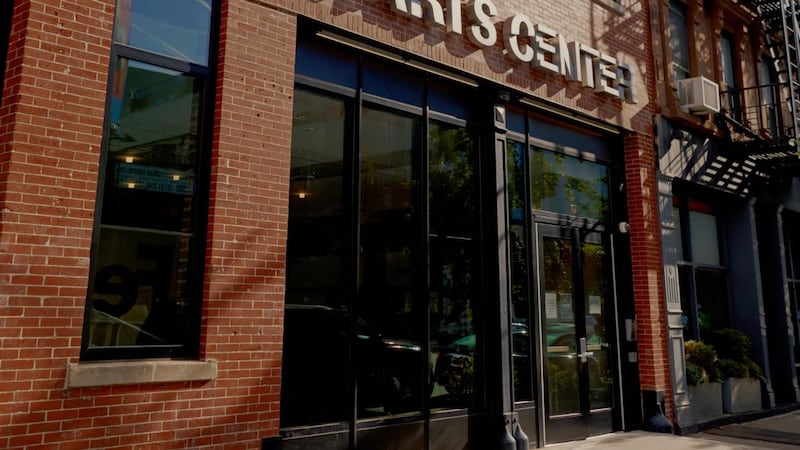
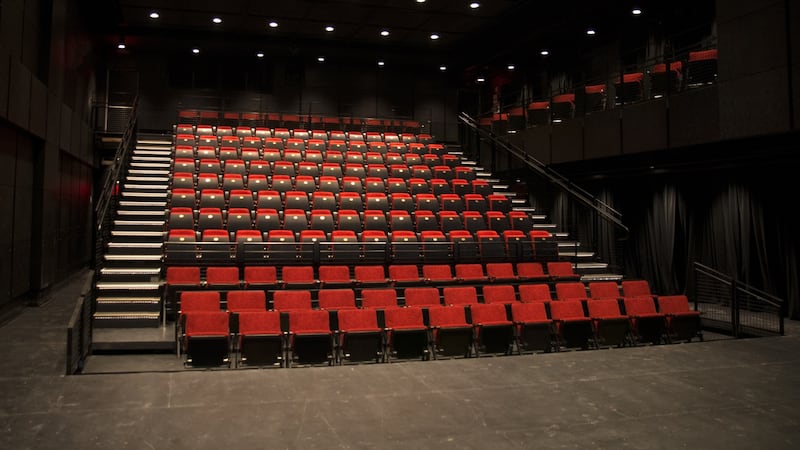
The new building was designed by New York firm Davis Brody Bond, which also created Manhattan’s National September 11 Memorial and Museum. Drawn up in consultation with the OPW, it is just a step around the corner from the centre’s Hell’s Kitchen home, but the theatre and arts spaces it houses are a world away. Visiting that older space one chilly November week back in 2018, I was quickly caught up with the small team’s passion, as well as the clear love its audiences had for the tired and tatty theatre and the surprises to be enjoyed inside.
Jigs and reels
I had arrived full of prejudice, expecting an onslaught of jigs and reels, stage Irish accents and a flood of rebel songs. Instead, I was instead treated to a programme including jazz musician Cassandra Wilson, clarinet player Ben Goldberg and comedian Mike Birbiglia. The session, put together by Paul Muldoon, was more about the Irish passion for the pot luck of wide-ranging conversations and generous connections than any specifics of ethnicity. It was also a damn good session. There was, and still is also a programme of classes including Irish language, tin whistles and the rest, but the centre's programming today leans on an interpretation of Irishness that is about diaspora, hospitality, openness and a welcome to talent across all disciplines.
“How do you make being Irish relevant in modern culture?” Connolly muses. Born in the United States to Irish parents, his first connection to Irish culture was through traditional music, via the Irish Hour, on the radio on Sunday afternoons. “I would have some nostalgia for that,” he says, “but that’s not my relationship to Irish culture as an adult. So how do you make any particular heritage relevant in the modern world?” Connolly’s answer is to look at how that culture interacts with the wider world, rather than how it is contained within itself.
Diversity
He quotes journalist Pete Hamill, saying that "New York is the capital of people who are not like you" as a key to finding shared cultural identities through diversity. "We decided to launch a whole-year programme," he says, "so we could issue the widest possible sense of invitation. It's not in an effort to be fully comprehensive, but to express strong messages that whether you're a young queer artist, a traditional artist, an artist of colour, an artist who does not feel comfortable in the tidy categorisation of modern programming, you might see yourself in what we're doing here, and see this as a place where you can come and make, and present your best work." He pauses. "Beyond that, we just want to do great stuff."
That “great stuff” will now happen in a great building. The old 99-seater theatre, housed in the former tenement building, has moved to a 21,700sq ft space that includes a theatre with flexible configurations for up to 199 people. There is also a library, educational and community spaces, more room for visual art, and a bar run by local wine bar Ardesia. The original building will also be retained by the centre, with a view to doing it up as time goes on.
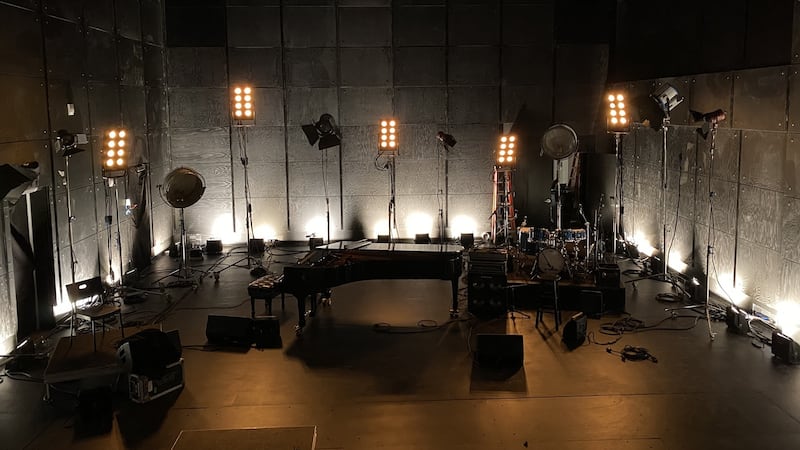
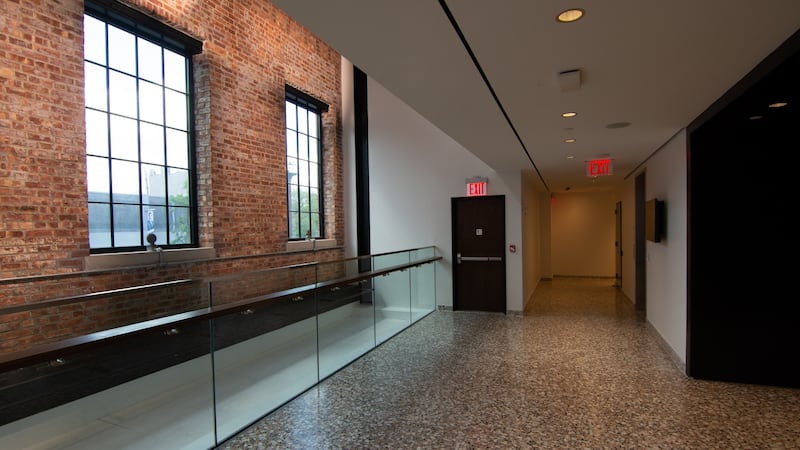
The inaugural programme kicks off with a series of performances by Camille O'Sullivan from December 4-31, and an exhibition extending throughout the building put together by curator-in-residence Miranda Driscoll (formerly of Sirius Arts Centre in Cobh and now director of Washington, DC's Solas Nua). The first show, The Space We Occupy, includes work by George Bolster, Neil Carroll, Colin Crotty, Katie Holten, Fiona Kelly and Ailbhe Ní Bhriain. It will be followed by a solo show from Maud Cotter, opening in May 2022.
Contributed
The Irish Government has contributed to the New York project, adding $9 million to the City of New York’s $37 million. The State of New York gave $5 million, and private donations have amounted to $15 million. I speak to Connolly the day after the centre’s public launch. Behind him, a wall planner is barely visible under thickly clustered post-its. Now that it is no longer a building site, and the sounds of hammering and drilling are being replaced by music and lines of dramatic dialogue as shows go into rehearsal, I ask him if he has a favourite place in the centre’s new home.
“Yes,” he says, after a moment’s thought. “When you get to the second floor. It’s not the biggest space in the building, but it’s a place where the architect suggested we pull the balcony back a little. It’s magical. You’re proximate to the brick facade, you have the ceiling above where George Bolster’s mobile is hanging, and there’s a long drinks rail, which gives me nostalgia for the Gate [Theatre]. It’s the space you find when you’re on your way somewhere. You won’t have been planning for it, but if you stop for a moment – between where you were, and where you’re on your way to, you’ll discover there’s a lot to be found.”
As he describes it, it starts to feel a lot like all the best parts of art.
A series of invited “Gratitude Sessions” are running throughout November, while the full public programme kicks off on December 4th. Tickets on sale now.
[ irishartscenter.orgOpens in new window ]
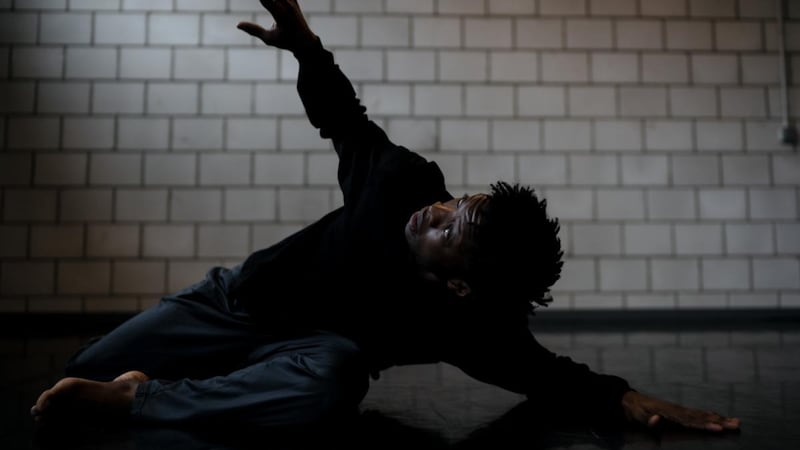
Old friends and new: some highlights from IAC’s 2022 programme
Martin Hayes and the Common Ground Ensemble Hayes's latest music project brings together Cormac McCarthy, Kate Ellis, Kyle Sanna and Brian Donnellan to debut from February 3-6.
Muldoon's Picnic A regular IAC favourite, poet Paul Muldoon invites musicians, poets, comedians and other intriguing people for eclectic sessions with house band Rogue Oliphant on dates throughout the year, kicking off on February 7.
The Same Originally premiered at Old Cork Prison in 2017, Corcadorca's production reunites Eileen and Catherine Walsh in Enda Walsh's intriguing play, February 16-March 6.
Mufutau Yusuf: Òwe The Nigerian-Irish dancer's exploration of identity, tradition and the contemporary takes to the stage from April 21-24.
Anna Mieke The 2019 winner of the RTÉ National Folk Awards showcases songs from her album Idle Mind, together with new releases, from May 19-22.
Good Vibrations Lyric Theatre's production of Glenn Patterson and Colin Carberry's 2018 musical takes a different view of 1970s Belfast, July 13-August 14.
Seán Curran meets Darrah Carr This Irish Arts Center commission brings the two choreographers together to merge tradition with innovation from September 28-October 2.
Ragas to Reels Ustav Lal and guests present a meeting of Indian classical and Irish traditional music and poetry from November 17-19, with a special children's performance during the run.























